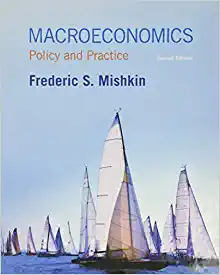Question
Roughly $39 billion in manufacturing incentives for chip plants known as fabs, as well as material and equipment factories, plus $13.2 billion for research and
"Roughly $39 billion in manufacturing incentives for chip plants known as fabs, as well as material and equipment factories, plus $13.2 billion for research and development and workforce training. There is a separate tax-incentive program, which provides a 25% advanced investment tax credit for manufacturing and processing equipment."
The government's $39 billion subsidy for construction is expected to cover approximately 10 percent of a company's capital expenditure for building a new manufacturing facility. Together with the 25 percent tax credit, the fund is expected to cover 35 percent of the cost of constructing a new factory.
Additionally, assuming the $13.2 billion subsidy for research leads to technological advancements, assume that the cost of producing each semiconductor chip is expected to decrease by 10 percent.
A. Briefly explain what fixed costs and variable costs are.
B. Provide a narrative to explain the impact of the CHIPS Act on the fixed costs and variable costs of producing semiconductor chips.
-------
Assume that each semiconductor chips firm faces conventional production technology. This question concentrates on the cost curves of these firms before the pandemic and before the CHIPS Act is implemented.
- Depict a graph that shows the typical pre-pandemic average fixed costs (AFC), average variable costs (AVC), average total costs (ATC), and marginal costs (MC) for an individual semiconductor firm.
- Label the horizontal and vertical axis.
- Label the curves as AFC0, AVC0, ATC0, and MC0.
Step by Step Solution
There are 3 Steps involved in it
Step: 1

Get Instant Access to Expert-Tailored Solutions
See step-by-step solutions with expert insights and AI powered tools for academic success
Step: 2

Step: 3

Ace Your Homework with AI
Get the answers you need in no time with our AI-driven, step-by-step assistance
Get Started


